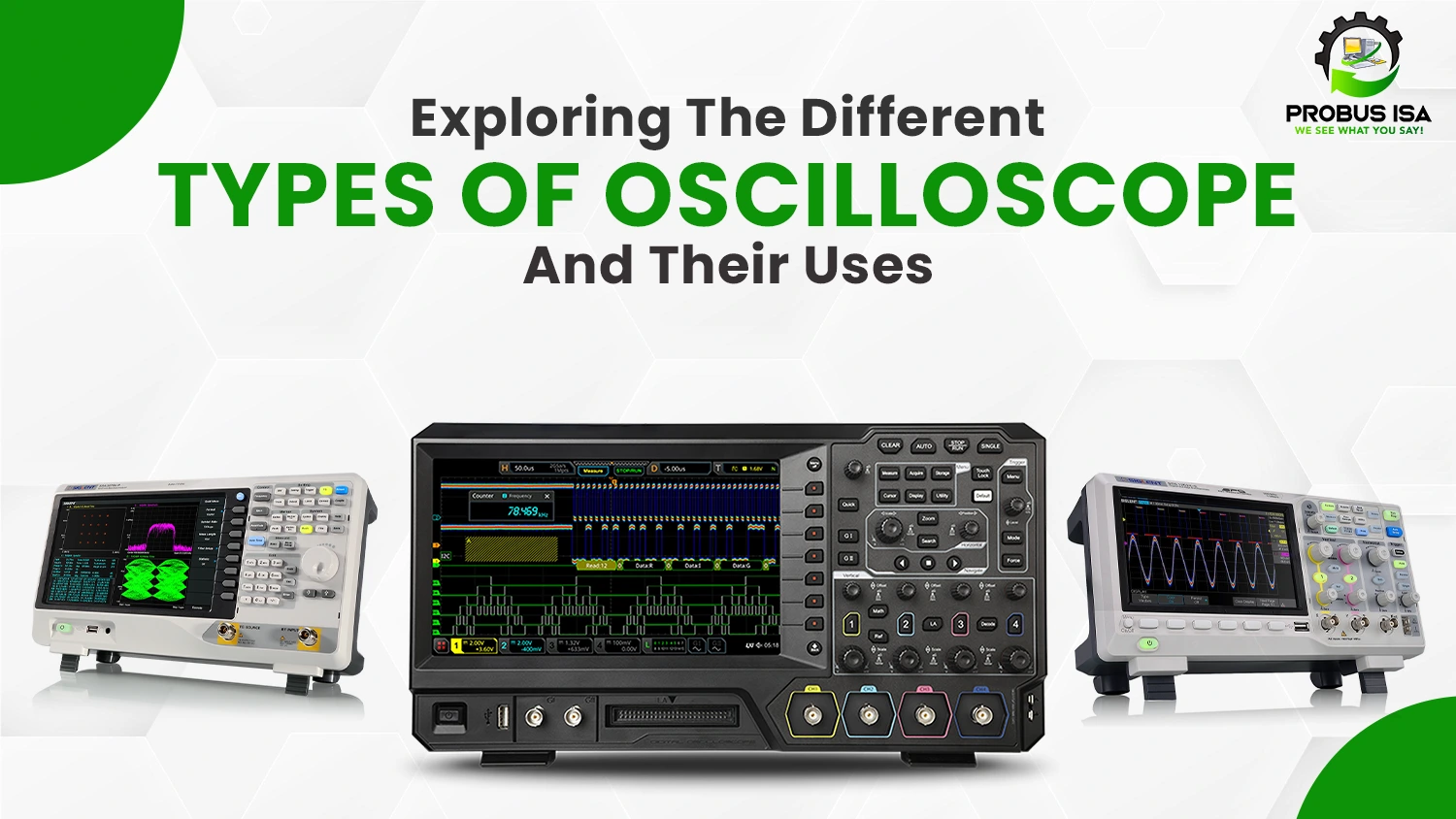One Stop Shop For All Your Electronics Needs!

Types of Oscilloscope: Electronics uses a wide range of technical tools for PCB troubleshooting. However, among all these basic machine-learning tools, Oscilloscopes are essential for analyzing electrical signals. In the past few decades, they have evolved into various instruments suited for multiple needs.
Whether it is a simple circuit for troubleshooting or high-frequency communications, there is a specific type of oscilloscope suited for your application. Here, we will look at all the types of oscilloscope, their key features, their uses in engineering, and why you might need the recent one over any to excel in your research.
There are different types of oscilloscope available. But before we examine these types, their features, and their applications, let’s classify them into four main classes.
Conventional oscilloscopes display waveforms directly in real-time without processing by digital means.
DSO, DPO, MSO, HR oscilloscopes. These use digital sampling and processing for more advanced analyses.
Sampling oscilloscopes and Automotive oscilloscopes
Handheld oscilloscopes and PC-based oscilloscopes. They have portability and integration with other external devices for mobility or reduced cost.
Read More: What Does an Oscilloscope Measure? A Complete Guide
Analog oscilloscope is the most traditional one. Often, it is treated as a base for modern signal analysis. These devices apply CRTs to represent signals in real time. Sometimes, this may provide a direct and intuitive representation of waveforms.
An analog oscilloscope is extremely nice for viewing smooth, repetitive waveforms like sine or square waves. They find most applications in testing audio signals or in teaching basic electronics. However, since they have no storage and limited features, digital variants are progressively replacing them.
Digital storage oscilloscopes changed the face of signal analysis by allowing analog signals to be converted into digital data, which enables signal storage, processing, and visualization capabilities.
DSOs can be used in a wide field of applications, from simple circuit debugging to even high-level research. Their use is ideal for recording and analyzing complex signals for digital electronics, telecommunications, and embedded systems.
Digital phosphor oscilloscopes are an extension of DSOs in terms of waveform capture rate and signal visualization. They are exceptional when it comes to showing variations in the signal over time with different intensities.
DPOs find extensive use in high-speed digital designs, RF signal analysis, and all places where real-time visualization of signal behavior is the concern.
It is a mixed signal oscilloscope that includes the functions of an oscilloscope and a logic analyzer into one device. So, both analog and digital signals may be analyzed using one tool.
MSOs can display multiple analog waveforms digitally along with digital logic states, making it easy to correlate the two.
Many MSOs support the decoding of communication protocols like I2C, SPI, and CAN.
These devices are equipped with a number of analog and digital channels to be used for thorough analysis.
MSOs are greatly required in the design of embedded systems. The microcontrollers, FPGAs, and other mixed-signal components have to be debugged by the engineers. They are also commonly utilized in testing IoT devices.
Handheld oscilloscopes are rugged and compact devices through which engineers and technicians can analyze signals in the field. They are portable.
Telecommunications, Field Service, Industrial Maintenance Use: It is best to prioritize portability and rugged design over maximum feature performance.
It attaches to a computer for the use of the PC’s processing power to analyze and show signals.
A PC-based oscilloscope would be good for a hobbyist, student, and budget-conscious professional working in light-duty signal analysis for education.
Sampling oscilloscopes are application-specific devices used to analyze ultra-high-frequency signals and are usually in the gigahertz range.
Sampling oscilloscopes are critical in telecommunications, satellite communications, and RF signal analysis. They are mostly used in labs and high-end testing laboratories.
High-resolution oscilloscopes are ideal for those applications that require precise details. These provide exceptional fidelity of the signal.
These are used in power electronics, medical device testing, and any other field where signal precision is critical.
The automotive oscilloscope is designed to test and troubleshoot contemporary vehicle systems.
Automotive oscilloscopes are highly useful to an automotive engineer and mechanic who is working on a modern car to diagnose the problem in the ECU, sensors, or actuators.
Read More: Understanding How Spectrum Analyzers Work – Unveiling Insights
Each type of oscilloscope is designed to handle specific tasks across different fields. Understanding the use of an oscilloscope in your particular area can help you select the right tool for accurate signal analysis and troubleshooting. Choose the one that fits your needs to stay ahead in the ever-evolving tech landscape.
Probus ISA provides researchers and enthusiasts with the essential hardware to run OSCILLOGOAT™ software.